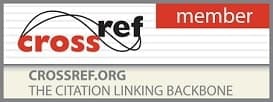
Printed Journal | Refereed Journal | Peer Reviewed Journal
2021, Vol. 3, Issue 2, Part A
Stigma among recovered patients of COVID-19 after discharge from a COVID dedicated centre
Aim: To explore the relation of stigma with the socio-demographic profile of the patients who have recovered from COVID.
Methods: 100 consecutive, consenting cases each testing positive (N=50) and Negative (N=50) of age more than 16 years from both the genders will be recruited for the study. Patients were contacted telephonically. The data were collected in the semi-structured Performa and the “Explanatory Model Interview Catalogue (EMIC) stigma scale for affected people”. Keeping in view of the ethical considerations - the patients reporting psychiatric symptoms will also be advised appropriate treatment measures according to recent telemedicine guidelines as per by the National Medical Council.
Results: Out of the 118 selected samples, who were asked to participate in the study, total 100 patients participated in this study. Out of 100, 50 COVID test positive and 50 COVID test negative patients were included in this study. Out of 50 cases 62% of survivors were in the age group of 20-40 years, and close to two-thirds 64% were males, 56% of survivors were from the urban background. The mean time from hospital discharge to study entry was 12.1±4.8 [Range(R) = 6–20] days. 95% of survivors provided at least one stigma endorsing response and the total mean stigma score was 30.5±6.5 (R = 5–40). The mean stigma sub-scores were 8.1±1.6 (R = 2–8) for enacted stigma, 14.7±3.7 (R = 1–22) for externalized stigma and 3.7± 2.5(R = 0–6) for internalized stigma. The mean disclosure concern subscale score was 3.1±1.6 (R = 0–6). Enacted stigma was more among males as compared to females and was statistically significant (p=0.032). Enacted stigma and internalized stigma were both associated with education. Enacted stigma (p‹0.001), externalized stigma (p = 0.005), disclosure concerns (p = 0.001) and total stigma (p=0.007) was significantly associated with occupation of the survivors. After adjusting for age, gender, marital status, and time since discharge, COVID-19 survivors who were farmers [β= -8.55, 95% CI: -13.61 to -2.32-, p=0.005], were less likely to experience stigma as compared to unemployed. Stigma significantly decreased with increasing time since discharge after adjusting for age, gender, marital status, and occupation. [β = -0.76, 95% CI: -0.83 to -0.45, p‹0.001].
Conclusion: The high levels of enacted and externalized stigma among COVID-19 test positive survivors.
Pages : 45-51 | 626 Views | 266 Downloads

How to cite this article:
. Stigma among recovered patients of COVID-19 after discharge from a COVID dedicated centre. Int J Adv Res Community Health Nurs 2021;3(2):45-51. DOI: 10.33545/26641658.2021.v3.i2a.93
Related Journals
Related Journal Subscription





 Other Journals
Other Journals
